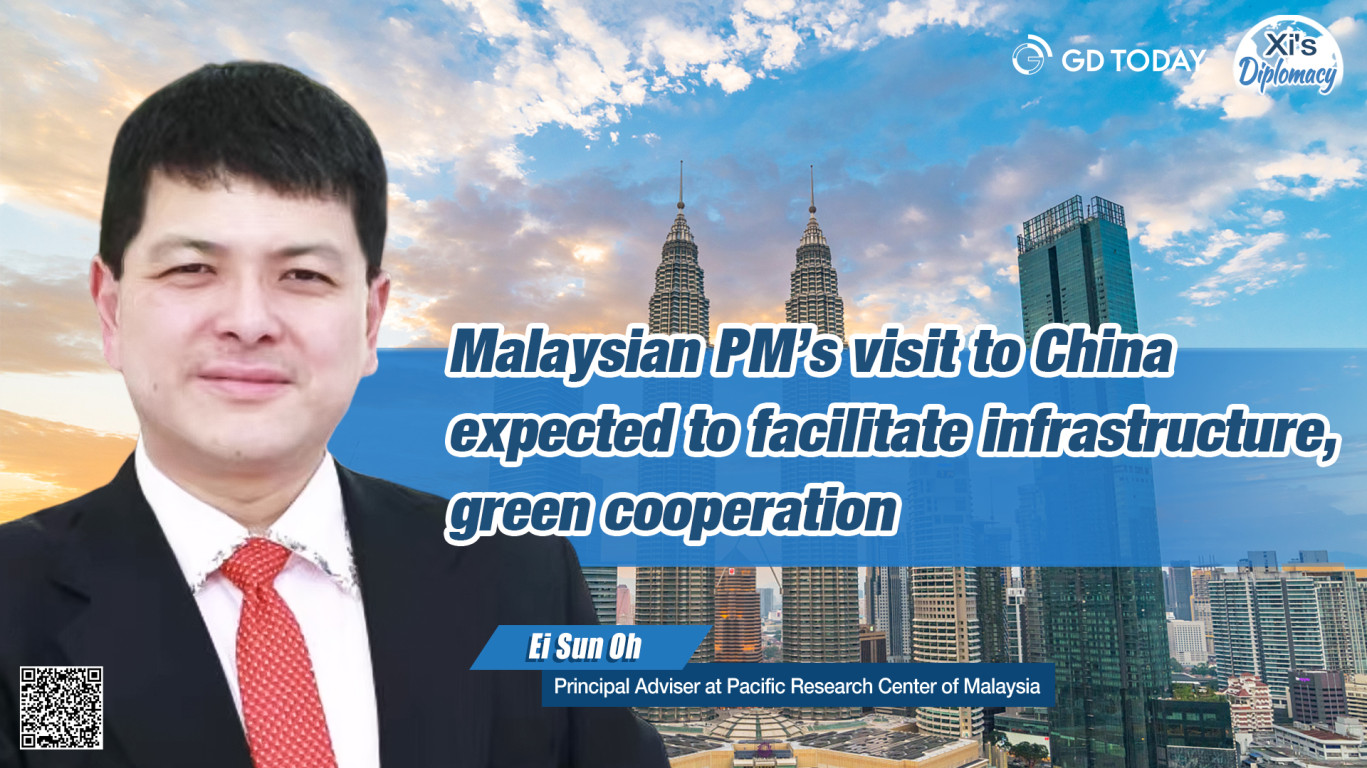Malaysian Prime Minister Anwar Ibrahim is conducting his first official visit to China from March 29th to April 1st since he took office in November 2022.
At the start of his term, Anwar declared that improving relations with China was a top priority for Malaysia and that he would push these ties to new heights rather than maintain them as they were.
“Malaysian government officials and entrepreneurs expect that Anwar’s trip to China could deepen and broaden economic relations with China,” Ei Sun Oh, Former Political Secretary to the Prime Minister of Malaysia and Principal Adviser at the Pacific Research Center of Malaysia, told GDToday on March 29th.
China has been Malaysia’s biggest trading partner for almost 20 years, while Malaysia is one of China’s largest trading partners in ASEAN. According to statistics, the bilateral trade between China and Malaysia exceeded 200 billion USD for the first time in 2022.
With such a huge volume of trade activities happening between China and other Asian countries, Ei Sun Oh believes that there will be a steady transformation from using USD as the main trade settlement currency to RMB.
“China has been the largest trading partner of almost all Southeast nations for many years, but the proportion of settlement by RMB is still too small. In contrast, using USD as the trade settlement currency often brings losses due to currency exchange. So, I hope to see new policies to encourage RMB in a greater free flow and settling trade as an international currency step by step,” said Ei Sun Oh.

China, Malaysia complementary for cooperation in green development
In addition to enhancing exchanges in trading, Ei Sun Oh believes that China and Malaysia should also strengthen cooperation in green development.
“Firstly, we should strengthen cooperation in high technology items, such as assembling more sophisticated machinery and equipment, and also in green technology, such as technology enabling renewable energies from solar sources, wind sources, and so on,” said Ei Sun Oh.
Though ASEAN countries enjoy abundant coal reserves, they are facing a rapid change in energy usage as the world is accelerating the carbon-neutral process. According to the China-Southeast Asia Energy Cooperation Report, by 2030, renewable energy is expected to become the main energy being used in the region, with much lower photovoltaic and wind power costs for most cities.
At present, China’s photovoltaic industry has the world’s most complete supply chain and supportive environment, and its global market share of the output from this industry has exceeded 70 percent.
According to Ei Sun Oh, most ASEAN countries are in great need of green technologies that can convert renewable energy sources such as solar and wind power. “For example, Malaysia has abundant sunshine and sea wind due to its typical tropical rainforest climate, but we don’t know how to turn them into energy. China would provide us with a lot of guidance and help,” explained he.
Being a frequent guest in China since 15 years ago, Ei Sun Oh has witnessed China’s environmental achievements by himself.
“What impresses me is that China did well in balancing economic development and environmental protection. As I travel more to China, I discover that China has been moving steadily towards green and sustainable industry. Chinese enterprises are required to consider environmental protection in their production. Also, China has banned imported garbage or trash. These examples can be great models for other countries,” said Ei Sun Oh.
High-Speed Rail between Kuala Lumpur and Singapore is likely to restart
Loke Siew Fook, Malaysia’s Minister of Transport, is a member of Anwar’s delegation to China. As their trip is almost simultaneous with Singapore’s Prime Minister Lee Hsien Loong’s visit to China, it is anticipated that China and Malaysia may discuss restarting the High-Speed Rail between Kuala Lumpur and Singapore (HSR).
Singapore and Malaysia signed a bilateral agreement in 2016 to jointly construct a high-speed rail linking Singapore with Kuala Lumpur, with a Chinese company serving as one of the contractors. The journey between the two places would have been reduced to 90 minutes after completing this project. However, for various reasons, the project was paused in 2021.
“Apart from the HSR, Chinese companies also play an important role in building Malaysia’s East Coast Rail Link (ECRL), which covers longer mileage than the HSR. I hope that this project will also be completed as soon as possible and become an important milestone for Malaysia’s high-speed rail project,” said Ei Sun Oh.
The ECRL is planned to cover 688.3 kilometers. As of February this year, 40 percent of the project’s overall construction has been done and is expected to be completed in 2027. Once it is finished, the time from Kelantan on the east coast of Malaysia to Selangor on the west coast will be reduced to four hours.
Reporter: Rofel, Steven
Video: Ou Xiaoming, Zoey
Poster: Lu Lu
Editor: Wing, Jasmine, James
















